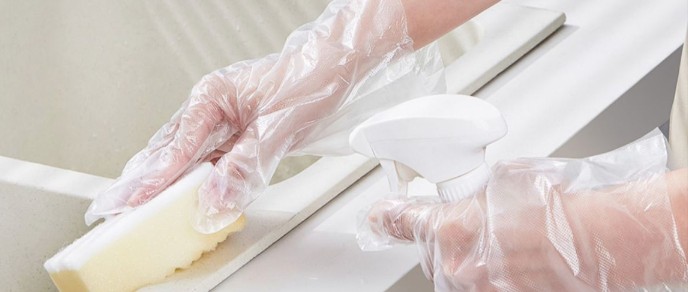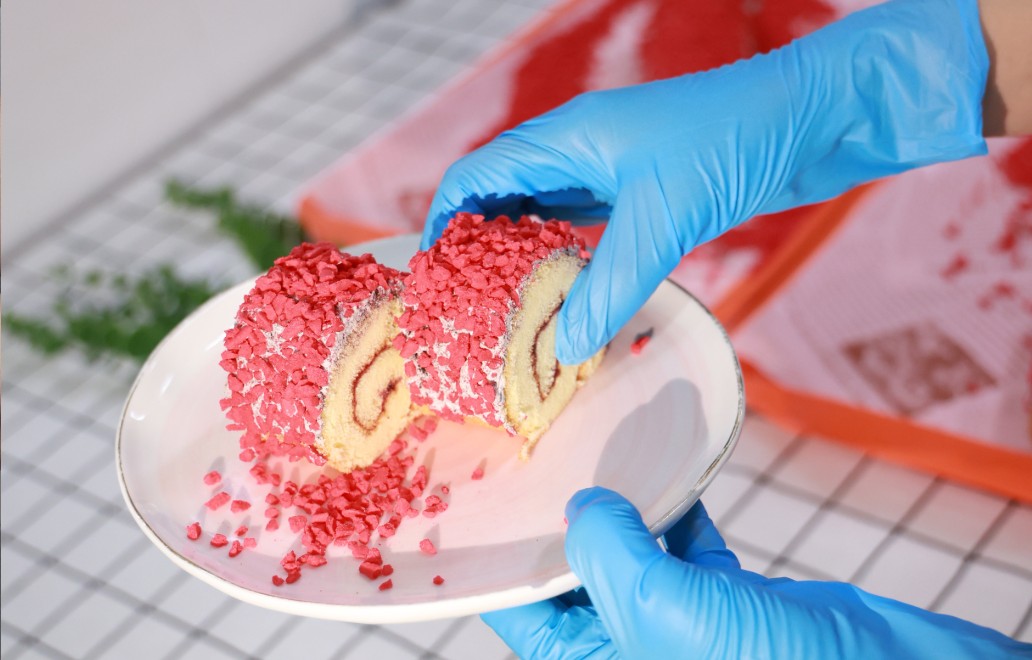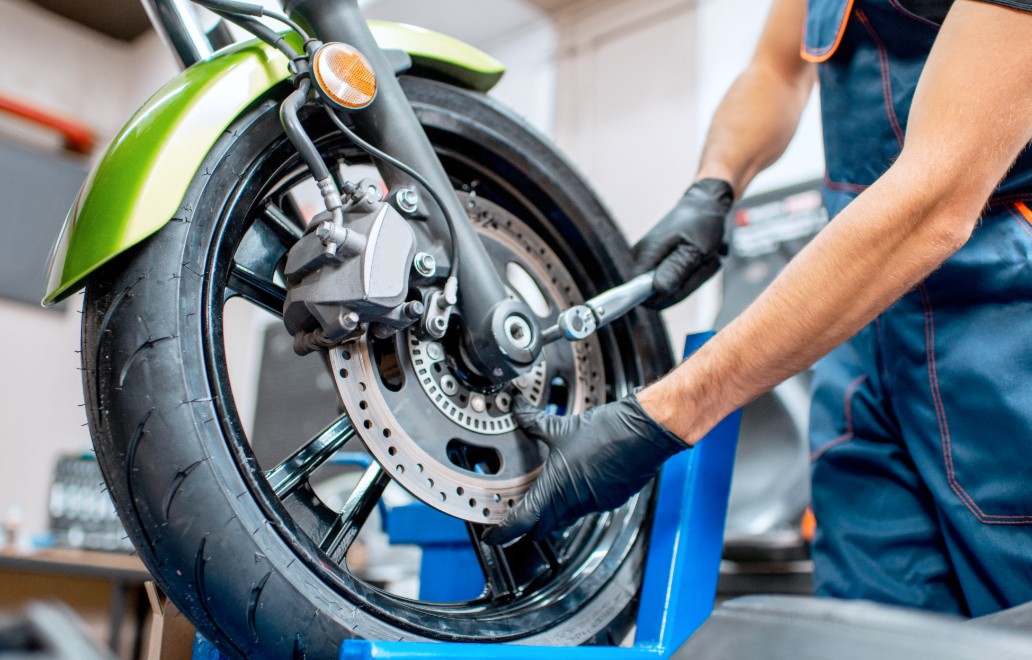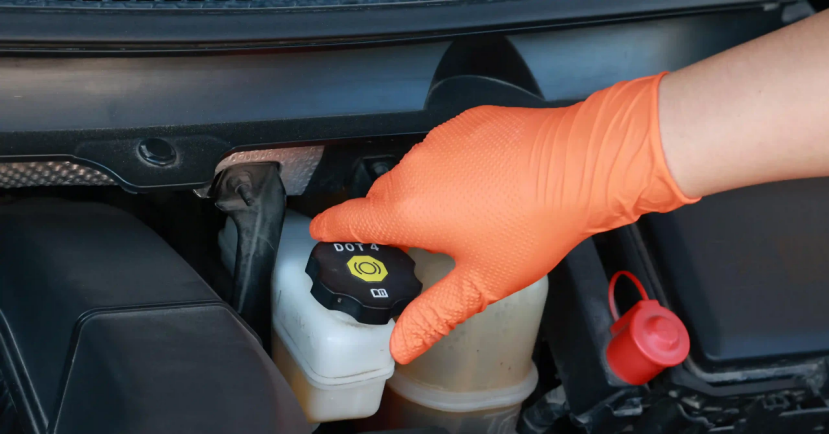Best Nitrile Chemical Resistant Gloves for Labs, Factories, and More: Your Ultimate Guide
Why Choose Nitrile Gloves for Chemical Resistance?
The Science Behind Nitrile’s Chemical Resistance
Nitrile gloves are commonly known for their great resistance to chemicals. They work well in places with oils, acids, and solvents. The secret is the synthetic nitrile rubber material. It resists damage from many harsh substances. Unlike latex gloves, which can swell or break with hydrocarbons and oils, nitrile gloves stay strong. They hold up even during long chemical exposure. Vinyl gloves are cheap. But they don’t work well in chemical-heavy places. Their resistance is weak.
When you compare nitrile to other gloves, the better safety of nitrile gloves resistant to chemicals is clear. In labs with corrosive reagents or factories using strong lubricants, these gloves are a solid shield against workplace dangers.

Key Features of High-Performance Chemical-Resistant Gloves
The strength of chemical-resistant nitrile gloves depends on a few key factors. Glove thickness is very important. Thicker gloves give a stronger barrier against chemicals. But they might make it harder to move your fingers. Good gloves have rough surfaces. This helps with grip in oily or wet conditions. Certifications like EN ISO374 Type B show the gloves meet standards. They resist at least three chemicals. This makes them safe for hazardous materials.
Another key factor is tensile strength. For the best chemical-resistant nitrile gloves, it should be at least 14 megapascals. This means the gloves can stretch without tearing. An elongation percentage over 500% shows good flexibility. This is needed for precise tasks and long wear.
How to Select the Right Chemical-Resistant Disposable Nitrile Gloves
Assessing Your Workplace Needs
Different workplaces have unique problems with chemical exposure. In labs, workers handle small amounts of strong acids or biohazards. They often touch them or get splashed by accident. Here, gloves with good touch sensitivity and medium thickness are best. In manufacturing or machine maintenance, workers may dip their hands in lubricants. They might also face solvents for a long time. Thicker gloves with a strong grip and tough cuffs give better safety.
Knowing the type and length of chemical exposure helps pick the right gloves. Disposable nitrile gloves chemical resistance varies by design and use. Glove features must match daily tasks and workplace risks. This ensures safety and good work.
Certifications and Standards You Can’t Ignore
When safety matters, certified gloves are a must. Standards like ASTM D6319 show a glove is medical-grade. They also prove it works well mechanically. EN 455 is for medical use. ISO standards ensure steady manufacturing.
EN ISO374 Type B certification is very important for chemical resistant nitrile gloves. It tests how long gloves resist chemicals. It also checks material strength against hazardous substances. A glove with this certification works for short or long chemical contact. These standards make sure the glove resists damage. They also protect skin well during use.
Top Applications for Chemical-Resistant Nitrile Gloves

Laboratory and Life Sciences
In science labs, safety is a daily need. Gloves must guard against corrosive chemicals and infectious materials. They also protect delicate tools. Chemical resistant nitrile gloves are popular in academic, pharmaceutical, and biotech labs. They are tough and comfortable. These gloves give great safety without losing fine motor skills. Workers need these for pipetting, handling glassware, or using lab equipment.
Nitrile gloves resistant to chemicals are also key for handling biological samples. They help when cleaning with strong disinfectants. Their disposable design stops cross-contamination. It also keeps sterile environments clean.
Industrial and Manufacturing Settings
Industrial workplaces often deal with lubricants, metalworking fluids, or cleaning solvents. Workers need chemical resistant nitrile gloves that stay strong during stress and movement. For these tasks, gloves must be tough. They need better grip. They should also handle rough contact with metal surfaces or tools.
Thicker nitrile gloves with a rough finish are best here. They offer chemical safety and resist scrapes or small cuts. Good chemical resistant disposable nitrile gloves lower injury risks. They also boost work by staying reliable for many tasks.
Food Processing and Cleanrooms
Food handling needs gloves safe for edible products. They must also be protected from cleaning chemicals or disinfectants. Disposable nitrile gloves chemical resistance must meet food-grade safety rules. In cleanrooms, gloves must be sterile and non-shedding. They need to resist alcohol-based cleaners.
Nitrile gloves are a top choice in these areas. They have clean production standards and chemical resistance. They keep hygiene high while staying protective. Gloves for clean environments must pass extra quality checks. This ensures they don’t harm the sterile setting.
Proper Use and Maintenance of Disposable Nitrile Gloves
Avoiding Common Mistakes in Glove Handling
Chemical-resistant gloves lose strength if not stored or used properly. Heat, ozone, or sunlight can weaken nitrile material. Store gloves in cool, dry places. Keep them in their original packaging until needed. Misuse, like stretching gloves too much or wearing the wrong size, can cause tears. It can also leave gaps in safety.
Signs of glove wear include color changes, thinning, or less stretch. These show that the gloves may not have full disposable nitrile gloves chemical resistance. Throw them away right away.
Maximizing Glove Lifespan in High-Risk Environments
In places with long chemical contact, change gloves often. Replace them every 60 to 90 minutes. Swap them sooner if they show wear. Double-gloving or using inner gloves can extend safety during immersion tasks.
Disposable nitrile gloves chemical resistance weakens if reused or worn too long. Follow proper rules to keep gloves working safely and well.
Spotlight: INTCO Medical ChemTuff™ Disposable Nitrile Gloves
What Sets ChemTuff™ Apart?
INTCO Medical’s ChemTuff™ disposable nitrile gloves are special. They are made for risky environments. Their surface is 60% smoother than most. This improves touch sensitivity and grip. They meet EN ISO374 Type B and ASTM D6319 standards. This proves they work in hazardous chemical settings.
These gloves fit many uses, like lab work, industrial maintenance, and food processing. Their strong build supports chemical resistance. Their comfy design reduces hand tiredness. With high tensile strength and stretch, ChemTuff™ gloves give steady safety during repeated tasks.
Customization for Unique Workplace Demands
INTCO Medical offers custom options for specific workplace needs. Custom chemical resistant nitrile gloves come in tailored sizes, colors, and thicknesses. They work in cleanrooms, labs, or industrial floors. These gloves match performance and safety needs exactly.
With over 30 years of experience, INTCO ensures every glove meets strict standards. As a leading Chinese nitrile gloves manufacturer, they serve global clients with precise products and reliable service. ChemTuff™ gloves show INTCO’s focus on new ideas and real-world use.



























